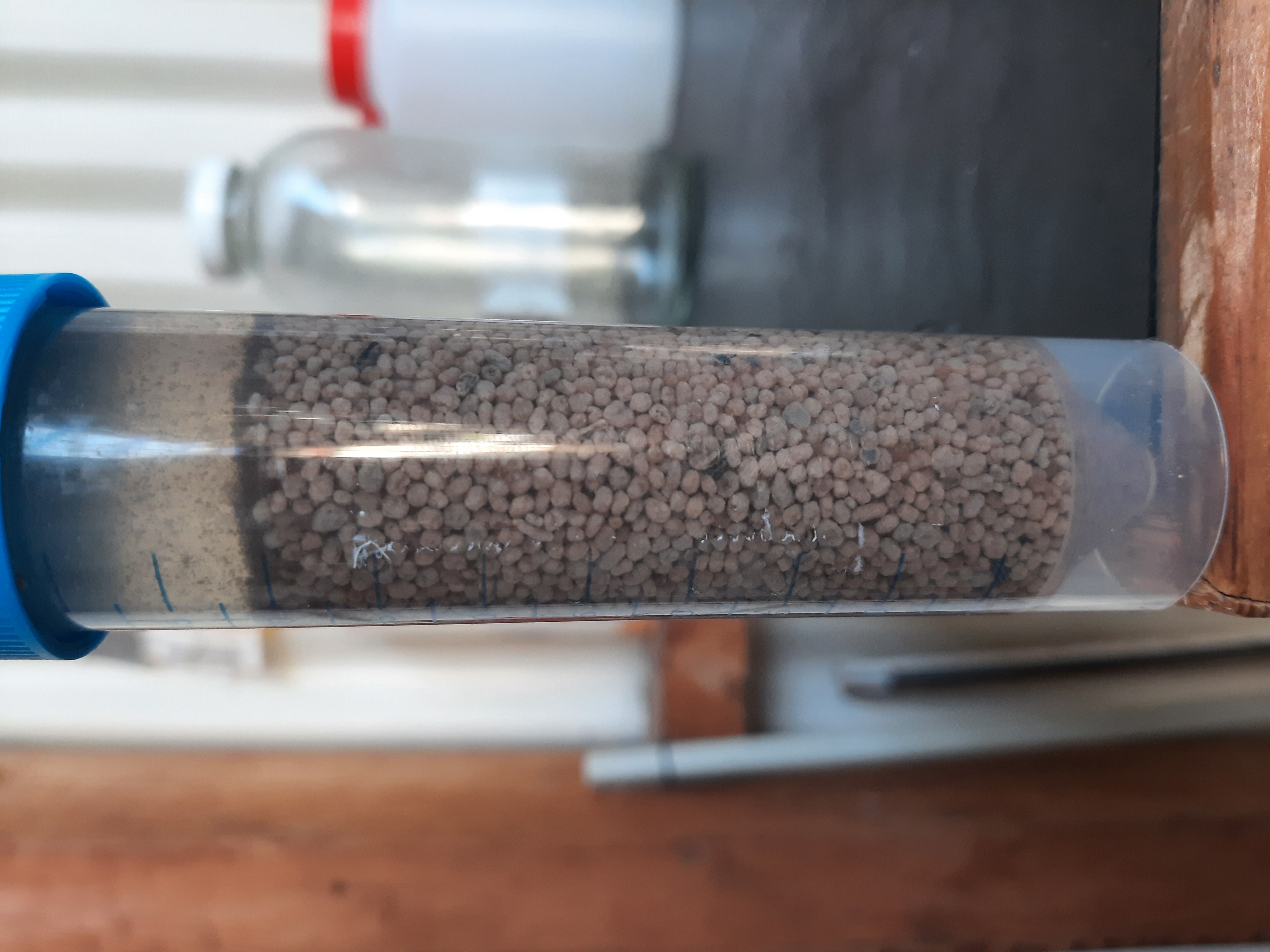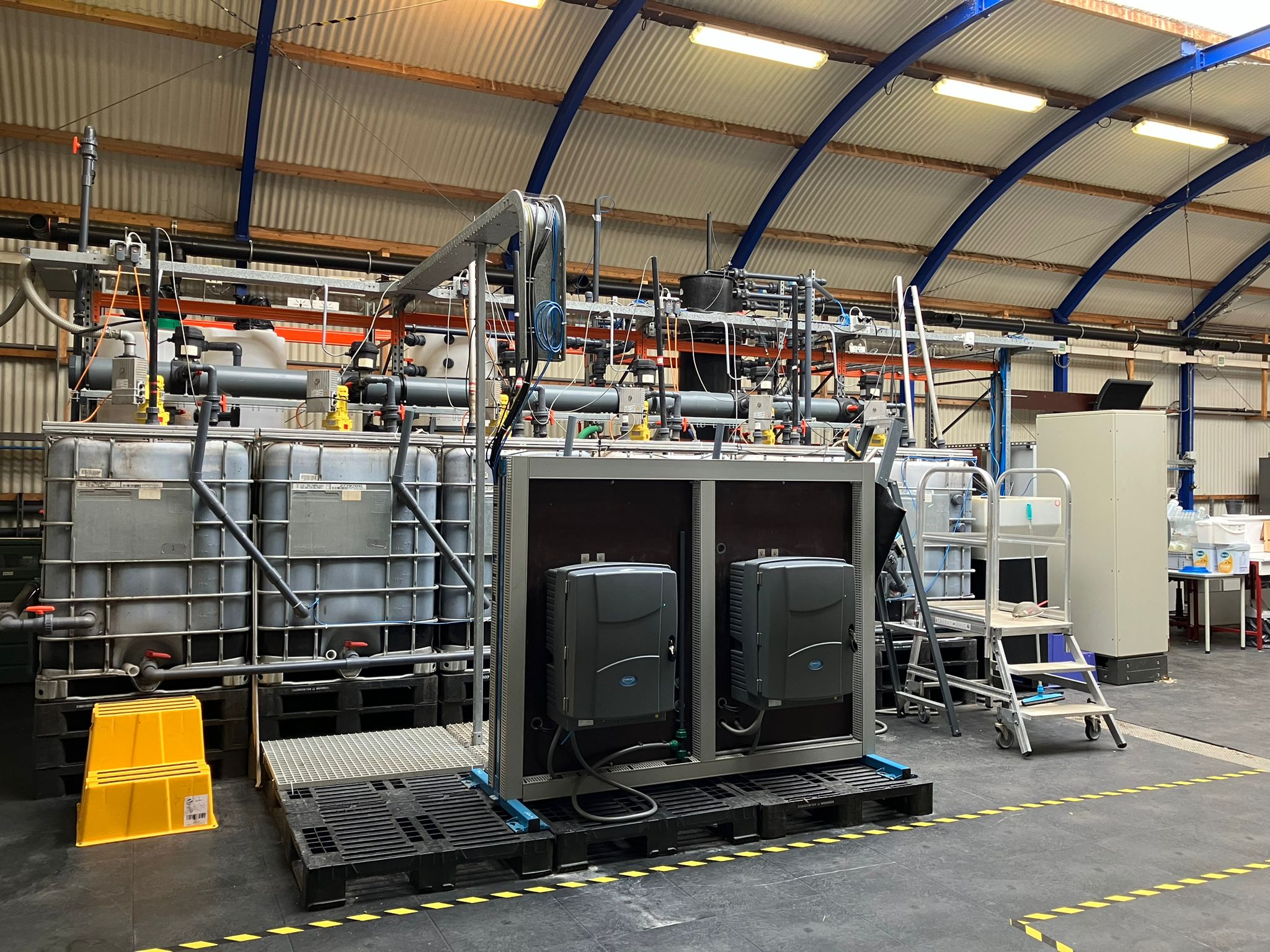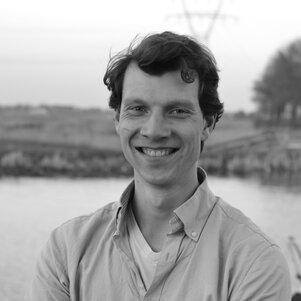From flocs to granules: new opportunities for wastewater treatment
On 16 May, Viktor Haaksman will defend his doctoral thesis at the Faculty of Applied Sciences at TU Delft. Together with a large public-private consortium, he developed granular sludge technology that allows existing wastewater treatment plants to increase their capacity without large-scale new construction.
Less space
Haaksman will obtain his PhD on a topic that is directly relevant and applicable to water boards and the water treatment industry. He conducted the research together with the Delfland and Rijnland Water Boards, Evides Industriewater, Delfluent Services, Royal HaskoningDHV and the Delft University of Technology. Haaksman: “The water boards face major challenges because more and more wastewater needs to be purified and because regulations are becoming stricter. If the bacteria that purify the water, also called activated sludge, can be concentrated in the form of granules, the purification takes up less space.”
Expensive
This aerobic granular sludge technique is not new but has so far been developed in a discontinuous batch process. This means it is not compatible with the regular practice of wastewater treatment plants that follow a continuous process. Here, wastewater is continuously guided through various purification steps. Conversion to a discontinuous granular sludge process can be very expensive on a large scale.
Pilot installation
To find a solution, Haaksman and colleagues built a pilot installation at the Wastewater Treatment Plant (WWTP) Harnaschpolder, the largest WWTP in the Netherlands. “Here we were able to work with real waste water and a pilot installation of 10,000 liters. This combination makes it much more realistic than in the lab.”
Granules instead of flocs
In the pilot installation it was demonstrated that it is possible to form granular sludge in a continuous process. Normally, bacteria form lighter flocs in such a process. “We managed to double the number of bacteria. This means that the installation can process both more and more polluted wastewater. The adjustments to the process required to achieve this appear limited.”
Innovation
The innovation underlying this is the selective feeding of granules and the selective capture of flocs. “This turned out to be sufficient for the entire bacterial system to grow mainly in granular form.” Along the way, Haaksman and the consortium learned a lot about the process conditions that lead to stable granular sludge formation. “This knowledge is very relevant, because in the future all modern biological treatment plants will probably use granular sludge.”
Larger scale
Together with Haaksman, now working as a process engineer at Royal HaskoningDHV, the consortium plans to apply the new concept to a WWTP and thus make it market-ready. “With the announced tightening of European standards for wastewater treatment, this will be a very relevant innovation that will greatly limit the social investments of water boards,” says Haaksman.
International interest
Haaksman sees a lot of international interest in the breakthrough. “There are many wastewater treatment plants that follow a continuous process. At some point they all need to expand their capacity. Better settling activated sludge has been a very attractive prospect for some time, so there’s a lot of research being done in that area. As a consortium we now have a big lead. There is a large market looming in Europe, Asia and the US.”




